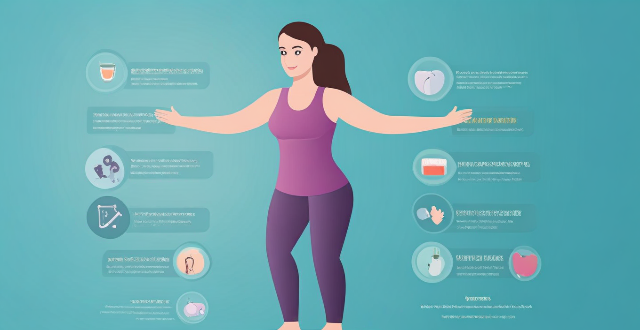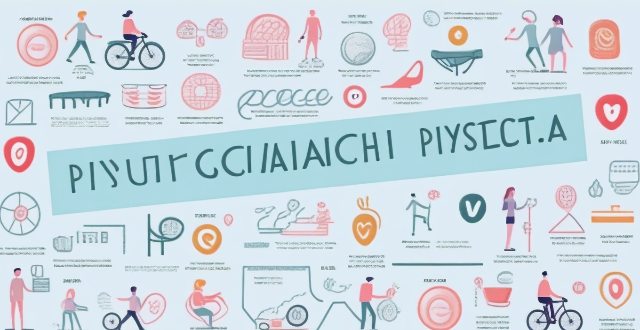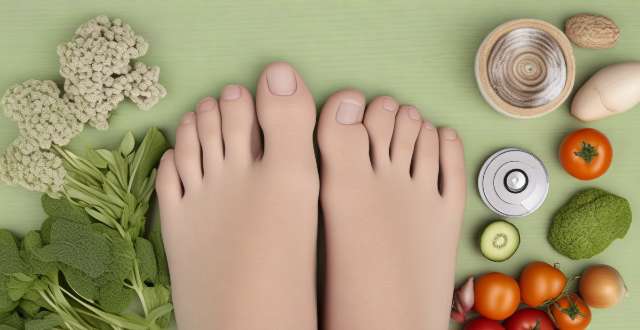Feet Swelling

Can exercise help reduce common pregnancy discomforts like back pain and swelling ?
Exercise can help alleviate common pregnancy discomforts like back pain and swelling by strengthening core muscles, improving posture, enhancing flexibility, promoting circulation, and reducing fluid retention. However, it's important to consult with a healthcare provider before starting any exercise program during pregnancy and follow safety precautions such as starting slowly, avoiding high-impact activities, staying hydrated, and listening to your body.

What is the best way to treat a sprained ankle on the spot ?
Resting the ankle is the first step in treating a sprained ankle. This will help reduce swelling and pain. Ice can also be applied to the affected area for 20 minutes at a time, several times a day, to reduce inflammation. Compression helps to reduce swelling by keeping fluid from pooling in the injured area. A compression bandage or ACE wrap can be used to provide this support. Elevating the ankle above the level of the heart can help reduce swelling by allowing blood to flow away from the injury site. It is important to keep the foot elevated when resting, but not necessarily while walking. Over-the-counter pain relievers such as ibuprofen or naproxen can be used to reduce pain and inflammation. However, it is important to follow the dosage instructions and avoid taking too much. If the sprain is severe, physical therapy may be necessary to restore range of motion and strength in the ankle. A physical therapist can create a rehabilitation plan tailored to the individual's needs. In rare cases, surgery may be required to repair damaged ligaments or tendons. This is usually only recommended if other treatments have failed.

How do I know if I have a sports injury ?
Sports injuries can occur during physical activities or sports, and it is important to recognize the signs and symptoms to ensure proper treatment. Common symptoms include pain, swelling, stiffness, weakness, and instability. There are various types of sports injuries, such as sprains, strains, fractures, contusions, and dislocations. Seeking medical attention for a sports injury is essential to promote healing and prevent further damage. Treatment may include rest, ice, compression, elevation (RICE), physical therapy, medication, or surgery.

What are some common sports injuries and how are they treated with sports medicine ?
This article discusses common sports injuries and their treatment in sports medicine. It covers sprains, strains, fractures, dislocations, concussions, rest and ice, compression and elevation, physical therapy, surgery, and rehabilitation. The article emphasizes the importance of understanding these injuries and seeking appropriate care to prevent them and promote recovery.

What are the best exercises for a full-body workout at home ?
A full-body workout at home is an excellent way to maintain your fitness levels without the need for a gym membership or equipment. Here are some of the best exercises that you can do at home to get a comprehensive workout: 1\. Squats: Stand with your feet shoulder-width apart and your arms straight out in front of you, then lower your body by bending at the knees and hips until your thighs are parallel to the ground. Pause for a moment, then push through your heels to return to the starting position. Repeat this movement for 10-15 repetitions. 2\. Lunges: Stand with your feet hip-width apart and take a big step forward with one foot, then lower your body until both knees are bent at 90-degree angles. Keep your front knee directly over your ankle and your back knee hovering just above the ground, then push off with your front leg to return to the starting position. Repeat this movement for 10-15 repetitions on each leg. 3\. Push-Ups: Start in a plank position with your hands shoulder-width apart and your feet together, then lower your body until your chest nearly touches the ground. Push through your palms to return to the starting position. Repeat this movement for 10-15 repetitions. 4\. Plank: Start in a push-up position with your hands shoulder-width apart and your feet together, then lower your forearms to the ground so that your elbows are directly under your shoulders. Hold your body in a straight line from head to heels for 30 seconds to a minute. Repeat this movement for 3-5 sets. 5\. Burpees: Start standing with your feet shoulder-width apart and your arms at your sides, then lower your body into a squat position and place your hands on the ground in front of you. Jump both feet back into a plank position, perform a push-up, jump both feet forward so they land outside of your hands, stand up and jump into the air with your arms overhead. Repeat this movement for 10-15 repetitions.

How do I choose the right shoes for marathon training ?
When it comes to marathon training, having the right pair of shoes is crucial. Not only do they provide comfort and support during long runs, but they also help prevent injuries and improve performance. Here are some key factors to consider when choosing the right shoes for marathon training: - Determine your foot type (flat feet, high arches, or neutral feet) and choose shoes accordingly. - Consider your gait (overpronation, supination, or neutral gait) and select shoes with appropriate features. - Choose the right type of shoe (trainers, racing flats, or trail shoes) based on your training needs. - Get the right fit by ensuring there is enough space in the toe box, the shoe feels snug but not constricting, and the heel fits securely without slipping. - Test before you buy by trying on shoes and considering different brands and models to find the perfect fit for your feet. - Don't skimp on quality by investing in a good quality pair of running shoes from reputable brands known for their durability and performance.

What are some effective treatments for sports injuries ?
Effective Treatments for Sports Injuries: Rest, Ice, Compression, Elevation, Medication, and Rehabilitation Exercises.

What are the consequences of neglecting foot hygiene ?
The text discusses the various consequences of neglecting foot hygiene, including physical health risks such as athlete's foot, toenail fungus, ingrown toenails, blisters and calluses, plantar warts, smelly feet (bromodosis), corns, bunions, gout, cellulitis, diabetic foot ulcers, deep vein thrombosis (DVT), and peripheral neuropathy. It also addresses mental health impacts like embarrassment and self-consciousness, anxiety, and stress. The text provides detailed descriptions and prevention tips for each issue, emphasizing the importance of good foot care habits to maintain overall foot health.